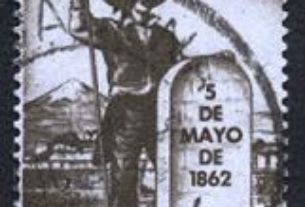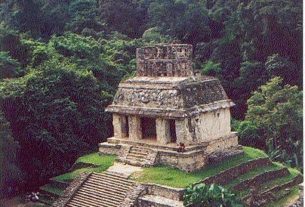Mexican History
One man’s history is another man’s myth. Voltaire
The Maya and the Aztecs, among others, developed many different forms of literature long before the arrival of the Spaniards. They were also deeply involved in the careful measurement of time and produced a complex, advanced calendrical system. Not surprisingly, chronicles and histories were an important part of this literary output. The Spanish Conquest and its aftermath destroyed most of the pre-Columbian historical records, at least those in the form of painted screen folds or codices. But other native sources of indigenous history have survived, such as ceramics, carved inscriptions on stone monuments, post-Conquest and colonial written texts, and written sources in the native historical tradition. From all of these documents we can piece together some idea of the concept of history held by the Maya, the Aztecs, the Mixtecs, and other pre-Hispanic high cultures.
A primary motive for recording history is to preserve the memory of the past. But the form the historical document takes depends on a number of factors, including the social and cultural background of the historians themselves. If we confine ourselves to a single viewpoint we run the risk of misunderstanding or misinterpreting our subject. Therefore, in order to place the Mesoamerican concept of history in a wider perspective we shall first look at a few other cultural concepts of history.
Fantastic theories about the origins of Mesoamerican civilizations are often based on faulty or insufficient evidence. The writer may be knowledgeable enough about Mexican antiquities but he or she may not know enough about the history of the people or culture alleged to be the origin or source to make any such connection. Suppose, for example, that a horde of Roman coins has actually been found under an Aztec temple. Even if true, this is hardly proof that Romans came to America. Before such a claim can be verified we must investigate both sides of the story in order to make valid comparisons or formulate viable theories about a Roman presence in the Americas centuries before Columbus. In the “old” days any schoolboy who knew anything about Roman history would have immediately rejected the idea as completely ridiculous. But even if there were some compelling reason or evidence for following up this supposed “clue,” the researcher-writer would have to come up with a great deal of corroborating evidence from the Roman side before any such connection could be established. Most “alternative” historians fail to take into account what is actually known about these alleged outside influences. Consequently, on the basis of scanty or faulty evidence, Greeks, Romans, Celts, Africans — everyone except the “native” peoples themselves — have been credited with creating or at least strongly influencing Mesoamerican civilizations.
Throughout history, bards and story-tellers have celebrated the battles and the deeds of kings and famous warriors. In Homer’s Iliad, the embassy sent to exhort Achilles to return to the battle against the Trojans finds him sitting in his tent playing the lyre and singing kléa andron (the deeds of famous men) [I apologize for this pathetic attempt to represent the original Greek]. The Homeric phrase “winged words” also expresses this desire to preserve the memory of the past.
Written history, as opposed to oral history, begins for us with the Greeks. Herodotus (5th century BC) has been described both as the “Father of History” and as the “Father of Lies” because he sometimes accepts stories we would probably regard as mythical or just plain fantastic. However, his History of the Persian Wars, which was known in Athens by 425 BC, has exerted considerable influence ever since. He shows the journalist’s nose for sensational news reports and the historian’s critical ability to put it all together into a dramatic narrative. Like other Greeks of his time Herodotus believed in oracles and other miracles. When asked whether or not the winds really responded to the prayers of the Greeks before the Battle of Salamis in 480 B.C., Herodotus replies that he cannot say for sure. To understand this attitude on the part of a historian we must, as in the study of Mexican history, place ourselves in the cultural context of the times.
In his History of the Peloponnesian War, Thucydides (460/455 BC – ca 400 BC?) wrote a more straightforward “linear” form of history, which is closer to our present concept of historical writing. To dramatize his narrative, he composed very elaborate, very difficult speeches (even for classical Greek), which he put into the mouths of speakers he could not possibly have heard in person. He wrote what a particular general or politician might reasonably have been expected to say on that particular occasion. By thus partially inventing speeches that were significantly different from the rest of the narrative, both historians were influenced by Homeric epic. The intention was not to deceive, because some readers might actually have been present when those speeches were first made. It was simply a means of presenting history in a more compelling manner.
Roman historians were likewise strongly committed to discovering the truth in their historical writings. In general they were more involved in public affairs than their Greek counterparts but the Latin writers also embellished their works with many stylistic and rhetorical flourishes. Greek and Roman historical writing was a literary form as well as an attempt to record history.
Livy (59 BC – AD 17) wrote a kind of tragic history of Rome from its origins down to 9 BC. Again this is not simply a straightforward historical narrative. Apart from his aim to write the definitive history of Rome, Livy also moralizes in his accounts of persons and events, idealizes the Roman past, shows patriotic bias toward the Roman present, and does not hesitate to expound his personal philosophical and religious views. Book One, which deals with the earliest oral traditions of Rome, contains a mixture of legend, myth, and history, which some critics have found objectionable. For example, while the suckling of Romulus and Remus by a wolf is apparently a legendary reference, there are documented case histories of children who have been raised in the wild. So perhaps we should not discount such tales altogether. This is especially true of Mexican history.
Livy and Herodotus, two of our principal historians in the western or European historical tradition, have been much maligned for including myths, legends, and “stories” in their historical writing. This failure to understand the purpose and methodology of the classical historians and the cultural context in which they lived and wrote has resulted in some misinterpretation of their works. This is also true of Mexican history in which myths and legends, at least as we interpret them, are at least as important as the historical “facts.”
With Sallust (86-35 BC) we have yet another approach to historical writing. He wrote his Catiline Conspiracy and Jugurtha in a monographic rather than an annalistic form. His historical writing is thus characterized by a high moral tone: human beings are body and mind, the physical is transient, the mental immortal. Action is important but the writing of history is an equally worthy pursuit. Tacitus (AD 56-118 ?), who wrote histories of the Roman civil wars and annals about the reigns of various emperors, has his own characteristic style and approach to his subject matter. Although he writes mainly about military matters, he has been called the most “unmilitary” of historians. In his early books, Ammianus Marcellinus (ca. AD 330-395), who was the last great Latin historian of the Roman Empire, wrote personal memoirs rather than formal history.
Greek and Roman historiography thus provided the models for our present concept of history. But while the classical historians wrote their histories, the oral tradition remained strong. Greek history was for the most part orally transmitted up to the 4th century BC. But even when written documents became more common, the oral tradition continued. Roman society was more book-oriented but emphasis was still placed on literary readings, improvisations, and memorization, as in Mesomerica.
Another variation of the historical consciousness but still within the Indo-European tradition is the Celtic concept of history. Caesar’s legions wiped out Celtic civilization in Europe but, through the work of Irish monks in monasteries throughout the British Isles, much of the Celtic oral and literary tradition has survived in the form of sagas and alternative history.
The Lebor na Gabala Erinn (“The Book of the Taking of Ireland”) is an elaborate, mainly literary, reconstruction of Irish history and origin legends dating back to the time of Adam. Some Celtic scholars think that “real” history begins only with the introduction of writing. They point out that the earliest verifiable date in Irish history is the mission of Palladius to Ireland in A.D 431 around the time of the introduction of Christianity and the Latin alphabet. However, we know a great deal about earlier Celtic times from other sources, such as comparative linguistics, archaeology, and the early Irish sagas.
The early Irish sagas of the Ulster Cycle hearken back to the Celtic Heroic Age in Europe, roughly the first and second centuries B.C. Parallel references in the Indian (Hindu) epic and other Indo-European epic traditions reveal common origins and shared cultural features, such as the “heroic light” that shines over the heads of Greek and Celtic warriors. Battle scenes and methods of warfare also follow a common Indo-European pattern. In sagas of the Historical Cycle, such as the Fingal Ronain, the Celtic bards and tradition-bearers recorded history much differently from the Greeks. They preferred to celebrate the deeds of warriors in the heroic past rather than narrate relatively recent events. This resulted in a blending of fact and supposed “fiction” in which an actual historical personage would be placed in an otherwise mythical or legendary setting. In the Celtic tradition, the main emphasis was on memory and the preservation of the oral tradition. In his war commentaries, Caesar reported that the Druids spent up to 20 years memorizing their traditional lore because they mistrusted writing. In Mexico, the transition from a predominantly oral tradition to a written tradition was sudden and violent. In the Celtic world this close relationship between the written and the oral tradition not only coexisted in ancient times, but has survived to the present day in parts of Scotland and the British Isles.
In ancient India we have yet another variation on the historical theme. Few dates in Indian history before the Middle Ages can be fixed with certainty. The early history of India has to be reconstructed from religious and secular works, reports of travellers, inscriptions of reigning monarchs and their ancestors, and other archaeological sources. This does not mean that ancient India had no history; rather that the poets, bards, and philosophers were more interested in the content of what they produced orally or in written form than they were in writing historical narratives in the Greek or Roman manner. Some critics therefore claim that India had no sense of history at all. But while it is true that we do not know the names of the composers of the Upanishads or other important texts in the history of ancient Indian civilization, it is equally certain that Indian religion, art, language, and literature did not develop in a vacuum. As in the Celtic tradition, the emphasis was on memorization to preserve the oral tradition. For example, the Sanskrit Vedas were first preserved verbatim orally by breaking the text down into individual syllables to make memorization easier. Likewise, in ancient Mexico, young Aztec nobles were educated in the calmecac, the Nahua centre of higher education, where they memorized their history lessons by following the painted codices.
We tend to think of history primarily in terms of hand-written manuscripts or printed texts. This is only one side of the story. The Greek, Roman, Celtic, and Indian (Hindu) branches of the Indo-European language family (apart from Hittite) represent our earliest western written and literary traditions. Historically they share certain common linguistic and cultural features, which enable us to make legitimate comparisons and verify cross-cultural influences. But even within this related family of languages with its shared cultural features, we find significant differences. It is hardly surprising, therefore, if the aims and the methods of the ancient Mesoamerican civilizations in recording their history appear somewhat strange or even bizarre. However, it is simply one more chapter in world history. Comparison with different cultural concepts of history and methods of recording past events of note can help to place Mexican history in a world-wide perspective. In terms of universal history, the achievements of the Maya, the Aztecs, and other advanced civilizations of the Americas have too often been passed over as mere footnotes in the history of European expansion and exploitation.



